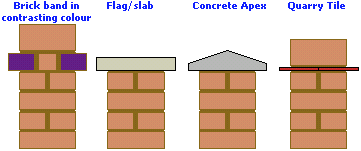| Retainer walls are used to hold back a bank of earth or similar. They range from small walls in a garden, holding back raised beds, to massive structures, 10m or more high, retaining a motorway embankment. Retainer walls are not as straightforward as simple walls, and any such walls greater than 1m high should be designed by a civil or structural engineer who is familiar with site and ground conditions. For low embankments, 600mm or less, a flag on edge retainer may well be adequate, and will certainly be cheaper than a brick-built wall. Other options include gabions, timber crib structures or proprietary retaining wall systems. Contact details suppliers of these products can be found on the links page. | 
